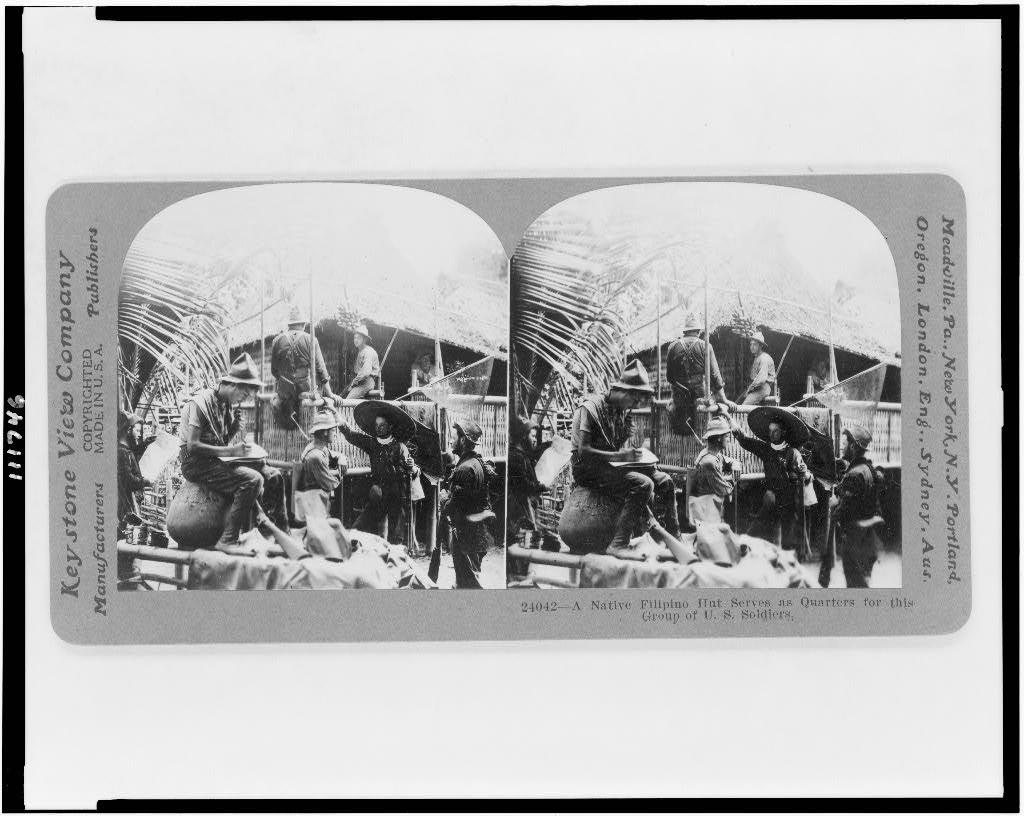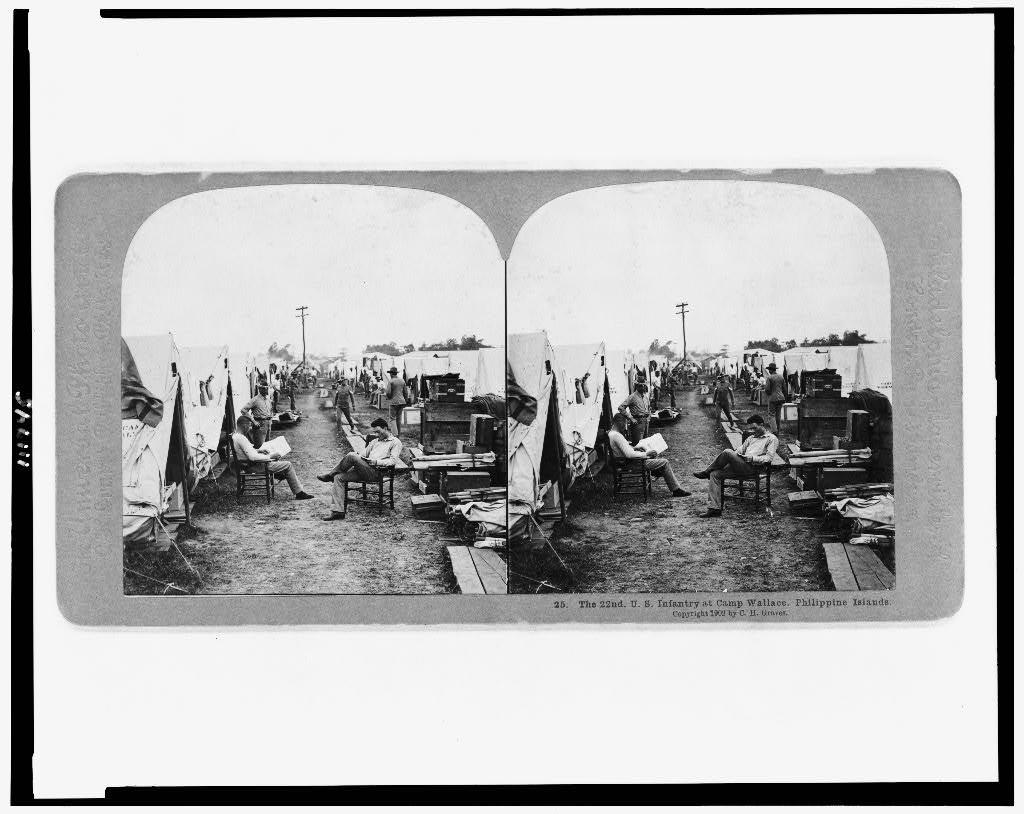



The Philippine-American War, 1899-1902
After its defeat in the Spanish-American War of 1898, Spain ceded its longstanding colony of the Philippines to the United States in the Treaty of Paris. On February 4, 1899, just two days before the U.S. Senate ratified the treaty, fighting broke out between American forces and Filipino nationalists led by Emilio Aguinaldo who sought independence rather than a change in colonial rulers. The ensuing Philippine-American War lasted three years and resulted in the death of over 4,200 American and over 20,000 Filipino combatants. As many as 200,000 Filipino civilians died from violence, famine, and disease.
— Office of the Historian

Emilio Aguinaldo, who led the Filipino troops against the U.S.

Stereograph showing Filipino men behind bars in prison during the Philippine-American war, Manila, P...

A native Filipino hut serves as quarters for this group of U.S. soldiers. Published by Keystone View...

The 22nd U.S. Infantry at Camp Wallace, Philippine Islands. Published by C. H. Graves, circa 1902.

This timespace is inspired by the 7th chapter of the book How to Hide an Empire, by Daniel Immerwahr. It tells the life of Puerto Rican nationalist Pedro Albizu Campos in the context of other nationalist movements and U.S. interventions in Latin America.